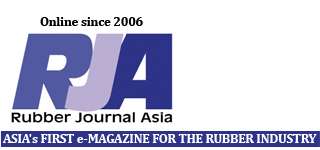 The automotive industry is by far the main customer for elastically deformable plastics. This is one conclusion of the new report of the market research company Ceresana which analyzes the global market for synthetic rubbers for the second time now. “Every year, more than 12.6 million tonnes of these materials are consumed all over the world”, announces Oliver Kutsch, CEO of Ceresana. “Demand is rising especially in the region Asia-Pacific which consumes already more than half of all rubbers produced.” The market study provides extensive data starting 2006 and forecasts data until 2022.
The automotive industry is by far the main customer for elastically deformable plastics. This is one conclusion of the new report of the market research company Ceresana which analyzes the global market for synthetic rubbers for the second time now. “Every year, more than 12.6 million tonnes of these materials are consumed all over the world”, announces Oliver Kutsch, CEO of Ceresana. “Demand is rising especially in the region Asia-Pacific which consumes already more than half of all rubbers produced.” The market study provides extensive data starting 2006 and forecasts data until 2022.
Tyres Are the Most Important Sales Market
In 2014, almost 60% of all rubbers were processed for tyres. Elastic materials are essential for the automotive industry but also for many other application areas, for example for hoses and cables, gaskets as well as profiles for windows and doors. Ceresana expects demand for rubber in the automotive industry to rise further until 2022 by 2.4% p.a. despite several crises.
Industry and Construction Show an Increase
Even more significantly, the worldwide demand for rubber for technical and industrial applications will grow by 2.9% p.a. Ranging from the chemical industry, engineering, and construction to electrics and electronics, increasing numbers of rubber are needed. Examples are conveyor belts, roll coverings, hoses, profiles, gaskets, cables, moldings, and roofing films, as well as adhesives.
Not All Rubber Is Alike
The by far most important type of rubber is styrene butadiene rubber (SBR): Over 5.3 million tonnes were processed in 2014. This type is produced by emulsion polymerization (E-SBR) or by solution polymerization (S-SBR). While E-SBR accounts for 73% of total SBR demand, the market for S-SBR develops at significantly more dynamical growth rates of more than 5% p.a. For tires, mainly these two SBR types are used. For industry and construction products as well as for the modification of materials, other types are preferred, for example ethylene propylene diene rubber (EPDM) or polychloroprene rubber (CR).
